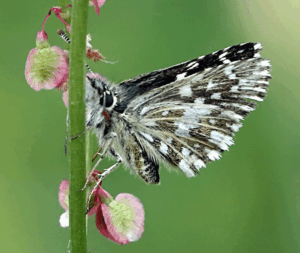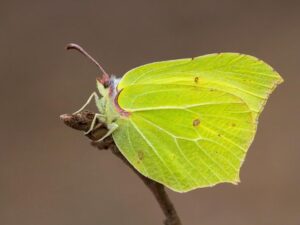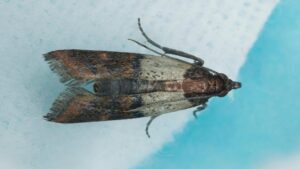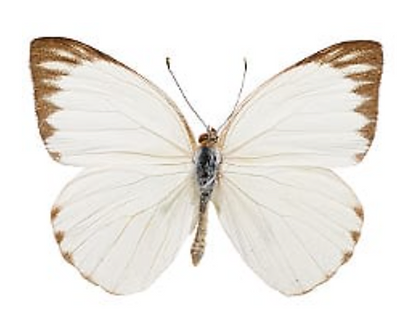
Butterfly: Wingspan: 1¾ – 2¼ inches (4.4 – 5.7 cm) UPPER SURFACE (dorsal) Male white with a narrow, scalloped, black forewing border. Female seasonably varable: Summer form “dirty” white or smoky gray/brown with black forewing border and black forewing spot; winter form whitish. UNDER SURFACE (ventral) White with yellow cast on hingwing. Female mirrors upper surface; summer form suffused with gray. Turquise blue antennal clubs.
ID Tip: Turquoise blue antennal clubs
Egg: Yellow. Spindle shaped with 11 longitudinal ridges. Laid singly or in clusters, often on the upper surface of host plant leaf.
Caterpillar: Mottled gray with five orange/yellow longitudinal bands. Covered with black, dot-like tubercles and sparse long hairs. Head yellow orange; speckled with black dots.
Chrysalis: White with black markings and dots. Two recurved black horns on third segment.
Butterfly Name: Great Southern White
Scientific Name: Ascia Monuste
Identification: Upper surface of male forewing white with black zigzag pattern on outer margin. Dry season female form resembles male with heavier black zigzag pattern and a small black spot in the wing cell. Wet-season female is darkened with black scales above and below.
Wing Span: 2 1/2 – 3 3/8 inches (6.3 – 8.6 cm).
Life History: Males patrol for females. Eggs are laid on the upper surface of host plant leaves in groups of about 20.
Flight: All year in South Texas, peninsular Florida, and along the Gulf Coast.
Caterpillar Hosts: Mustard family (Brassicaceae) plants including beach cabbage (Cakile maritima), cultivated cabbage and radish, peppergrass (Lepidium species); and plants in the caper family (Capparidaceae) including nasturtium.
Adult Food: Nectar from many species of flowers including saltwort, lantana, and verbena.
Habitat: Salt marshes, coastal dunes, open fields, and gardens.
Range: Resident of south Atlantic and Gulf coasts south through tropical America. Migratory along the Southeastern coast. Strays to Maryland, Kansas, and Colorado.
Conservation: Not usually required.
NCGR: G5 – Demonstrably secure globally, though it may be quite rare in parts of its range, especially at the periphery.
Management Needs: None noted.
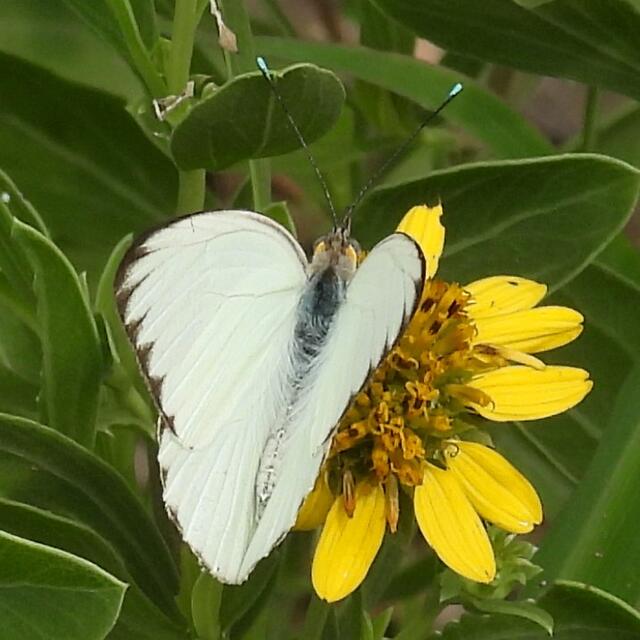
Description:Medium-sized butterfly with a wingspan to 3-3/8 inches. The male is white with a black zigzag pattern on the outer margin of the forewing. The female is grayish-white to gray with a black border on the forewing and a black cell spot. The underside of the hindwing is whitish-yellow in males and grayish in females. The clubs on the antennae are turquoise in both sexes. The caterpillar has a yellowish-brown head, five long yellow stripes, and numerous small black spots with many small hairs; there are short tails on the posterior end. The chrysalis is white with black markings.
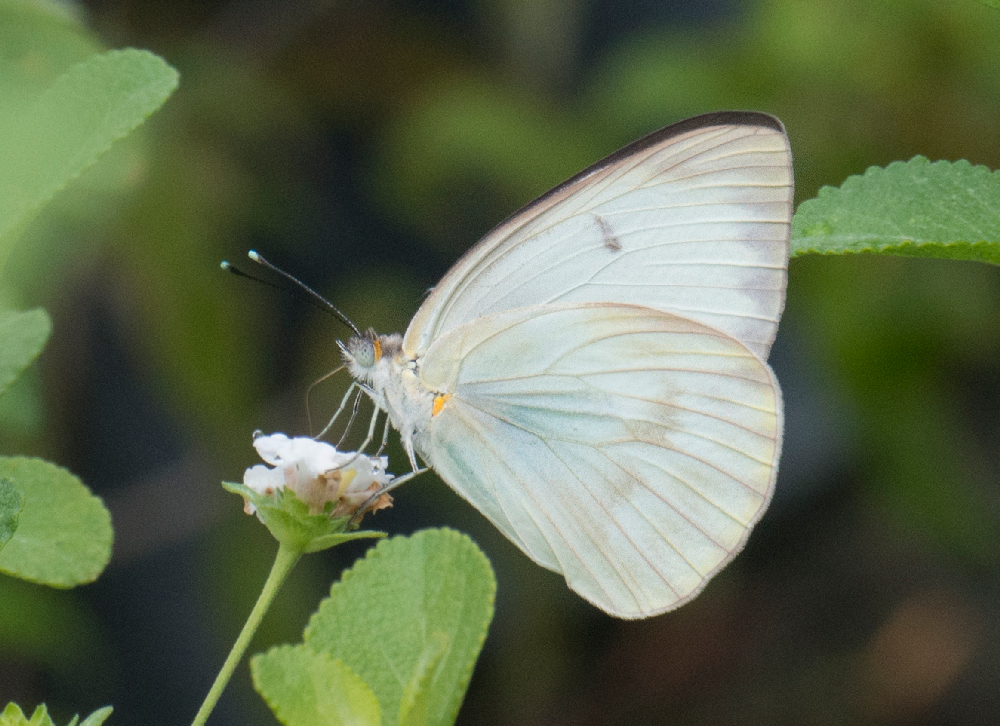
Great Southern Whites tend to be wanderers. Individuals often disperse, but the species is known for massive emigrations where thousands leave to colonize new territory. Coastal movement is common, and some years they travel inland, using a variety of weedy mustard plants for reproduction. Jim Egbert, who documented Great Southern Whites in Alabama, observed such a mass movement in June 2016. He reported seeing hundreds flying in south Baldwin County, and at times, was able to see three “whites” together: Cabbage, Checkered, and Great Southern. In the fall, Great Southern Whites often make a backward trek. These butterflies cannot tolerate hard freezes in any life stage, and there is no winter diapause. Freezing temperatures leave settlements only in more tropical climates like south Florida and southern Texas. There Great Southern White pioneers wait for warm weather to reinstate their northern expansion.
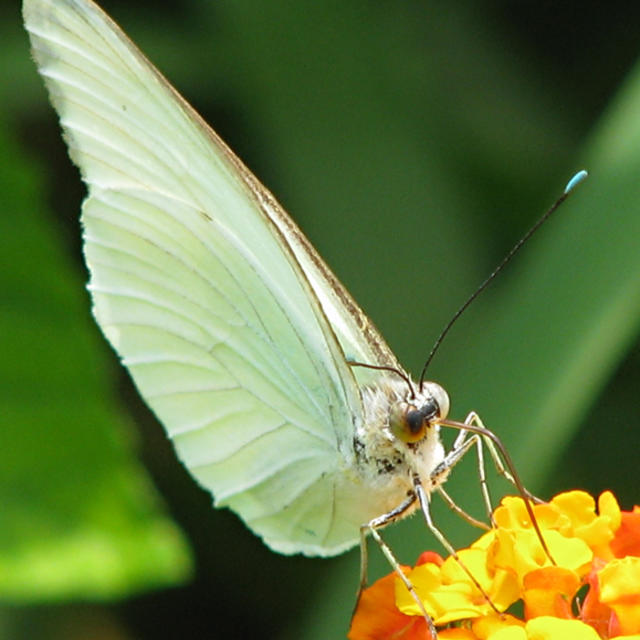
Males are always white, but females vary by season. Late season females are also white, but longer day lengths trigger some caterpillars to produce dark form (‘nigra’) females with extensive gray scaling. These are on the wing in summer months, although some white females still occur. Eggs are laid in groups on a variety of plants in the mustard family. Caterpillars are gregarious when young, but separate as they mature. They gain some chemical protection from the mustard oils they ingest, and this persists into adulthood. Great Southern Whites are less palatable to birds than many other butterflies.
Great Southern Whites have documented occurrences throughout Florida and in portions of the eastern coastal states. They make it to Alabama during high dispersal years.

